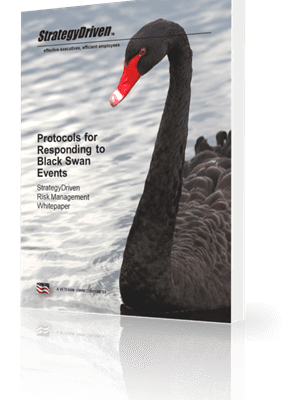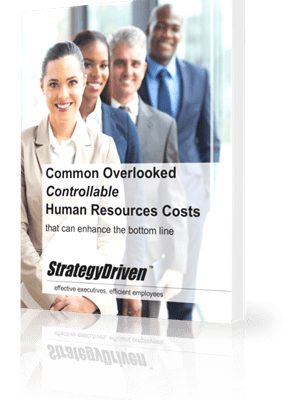Get the Yes: Winning Funding, RFPs, and Grants
When we seek funding or respond to an RFP, our proposals meet the criteria requested, presenting well-positioned information to persuade the decision makers to choose us. But winners are chosen by some mysterious set of criteria not only unknown to us, but often unknown to them. I began thinking about this when a friend told me she was writing a grant proposal. With my systems-thinking brain I asked her:
- How will they choose you over other worthy requests?
- What personal and professional criteria will members of the funding team consider before dropping others to fund you instead?
- How do political in-fighting or long-term client/colleague relationship preferences factor in to the decision process?
- How does your request fit in with their annual strategic plan? The commitments to their funding sources?
She had no answers, but resolutely believed that importance of her mission would rule the day. She has a 10% success rate, even though in many instances she knows people on the committee. That means she wastes 90% of her valuable time. Her strong appeal, great writing, and the importance of her message are lost because the criteria of those who might fund her driven by more than merit.
Decision Makers Driven By Unconscious, Unstated Criteria
Unfortunately, there are no ready answers to the above questions, even if they are posed. Here’s why:
- There’s no ‘one’ person on the committee who can convey the personal and political communication patterns that are largely unstated.
- An outsider can never understand the non-verbal, implicit, historic criteria being applied that’s most likely different in each situation.
- The funding group itself doesn’t always have a consistent, conscious understanding of why it does what it does.
- The questions an outsider asks to ‘understand’ are biased, gleaning biased data – not to mention that Responder most likely isn’t speaking for the entire group.
Using conventional practices of submitting a well-written, compelling, and provocative grant or proposal, or making a professional presentation, it’s a crap shoot. But it’s possible to have more success by facilitating the decision makers through their unconscious, mysterious process and helping them recognize, before they begin, the issues they will need to address to succeed.
Case Study
My clients in large corporations (naively) believe they win on either price, relationship history, or quality/brand. Here’s a real story.
A global consulting client received an RFP from a Fortune 50 company – the company historically used Company X as their consulting provider. My client, delighted at the chance to win new business, assembled a large team to respond to the multimillion dollar RFP. When I asked them what’s stopping the Fortune 50 company from using Company X now, my client went silent. They called the Fortune 50 company and asked:
CONSULTING CO: What’s stopping you from using Company X again this time?
FORTUNE 50: Nothing. We’re going to use them again. We just needed a second bid.
True story. Since we now knew we wouldn’t win the RFP, we chose a different route. We offered a cover page and a couple of pages of Facilitative Questions [a new type of question I developed that enables Responders to assemble/recognize unconscious, systemic criteria – in this case, regarding implementation, buy-in/consensus, resistance issues that would be a natural fall-out from a project of this size]. We wrote a note:
“We are interested in winning your business, and we’ve included an overview of the types of services we provide. However, since you will be using Company X, we’ve decided not to respond to the RFP but instead offer you a real service. We’re sending along some important questions to answer before you begin your project to ensure a successful implementation. We hope you find these valuable. And if the time comes you would like to have a conversation around how we can serve you in projects such as these, we look forward to putting our best team together to help you be successful.”
I spent some time understanding the human systems that would show up during this project and formulated about 40 Facilitative Questions to help the client uncover answers to problems that would come up but were not included in the RFP, such as:
- How will you know when you have assembled the appropriate group of people to give you the full set of correct data before you begin, to ensure you won’t use faulty or incomplete data moving forward?
- What would you need to set up at the very beginning of the project to ensure continuing communication among all involved, at each stage of the project, to ensure there is no time or resource wastage due to insufficient information being circulated?
By answering these questions, the client would have 1. Knowledge of potential problem areas that didn’t show up on the RFP, 2. Knowledge that we knew how to achieve successful implementations, 3. Knowledge we were professional, focused on their success, and eager for the business. We didn’t hear back for two months. Then they called and hired my client because their chosen providers didn’t address any of the buy-in/consensus/resistance issues we highlighted, and they realized there would be costly (in the millions) implementation problems. My client won the business with no proposal, just the two pages of Facilitative Questions that helped their prospect put their ducks in a row and avoid potential problems.
Why Does Excellence To Occur?
- If you merely offer a good proposal or presentation, you will never know how funders or clients will choose you.
- Groups who send out RFPs or offer funding only offer data points of what they think they need. They, themselves, most likely don’t know the idiosyncratic values-based, personal criteria each decision member will use when a vote is taken.
- Groups sending out RPS or funding sources seeking clients to back don’t know all the consensus or implementation issues that will occur during the implementation.
It’s possible to override these problems by helping funders/clients recognize what they need with by teaching them how to uncover and manage the hidden issues necessary for excellence to occur with minimal disruption. To differentiate yourself, use the opportunity of seeking business (i.e. doing a presentation), funding, or responding to a proposal to show them you can help them address their systemic shifts and give them the knowledge that you are a knowledgeable partner.
For my clients, I have created a decision facilitation model (Buying Facilitation®) that produces about 30% more success with proposals and presentations. You can create your own consensus/implementation model to add to your proposals and presentations, so long as they include the ability to help the clients manage the steps they’ll need for success.
About the Author

and Dirty Little Secrets: Why buyers can’t buy and sellers can’t sell and what you can do about it
.
To contact Sharon Drew at [email protected] or go to www.didihearyou.com to choose your favorite digital site to download your free book.










Leave a Reply
Want to join the discussion?Feel free to contribute!